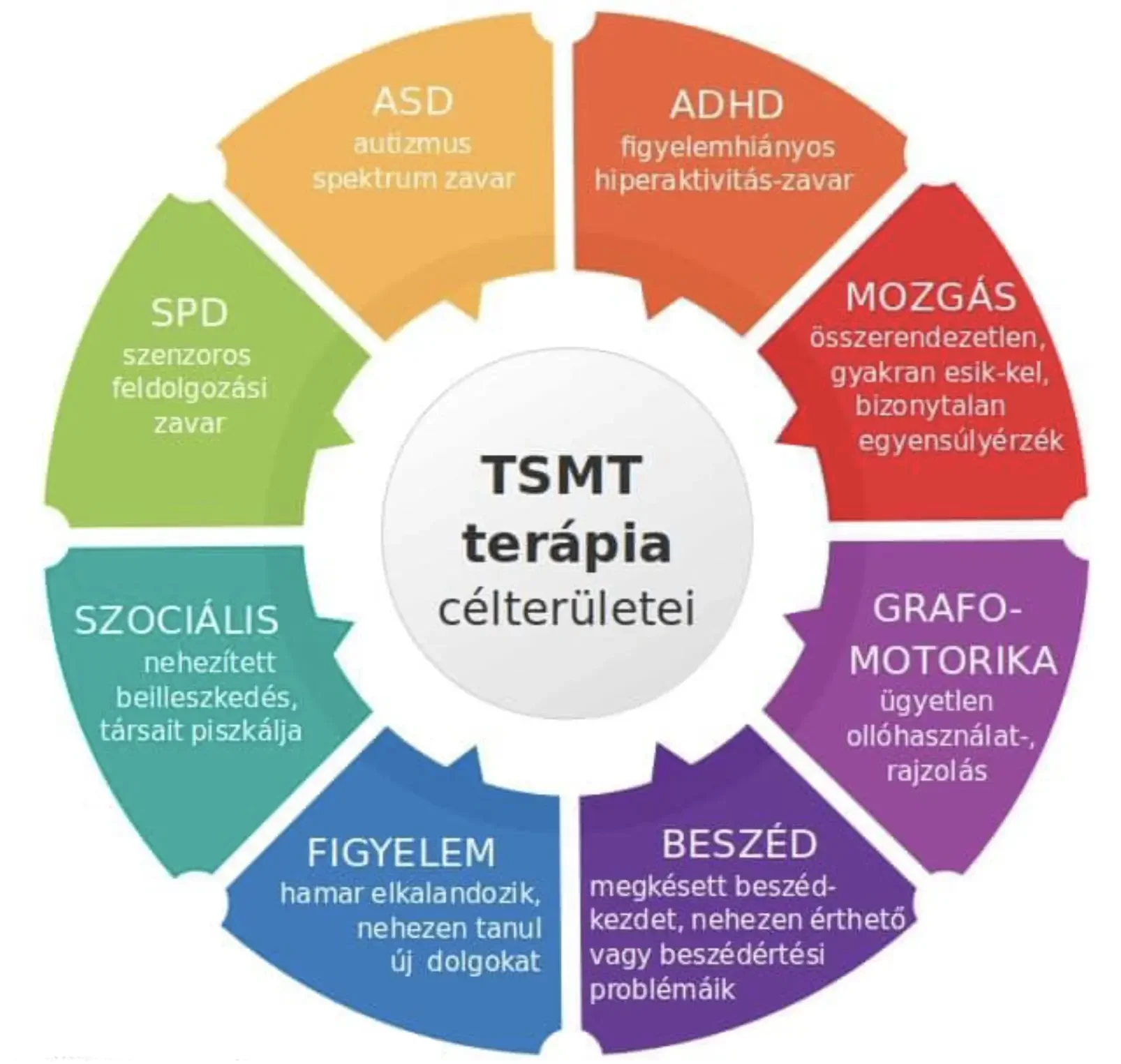What is the TSMT®?

How can I know if such a program can help my child?
What does such a Test consist of?
Every survey is preceded by a questionnaire with anamnestic data, and the child Sensory processing questionnaire to be completed by the parent, which the trainer uses to prepare for the assessment based on information about conception, pregnancy, birth and circumstances, as well as data collected during the postnatal period.
During the assessment, the trainer uses the same tools as in the training to assess the child's Longitudinal complex assessment of the LongiKid® test, which includes:
- gross and fine movements
- a graphomotor test at an appropriate age
- testing social skills and cooperation
- cognitive area
- basic vision, hearing, and posture analysis
- as well as tasks assessing the maturity of the nervous system
This will be followed by the evaluation of the test using a software, the results of which form the basis of the training program.

The parent fills out the two questionnaires.
Based on the evaluation, training can begin
How does the training work?
The training tasks are must be performed in the order, quantity, quality, and frequency specified by the trainer.
TSMT® I training at home, the parent and child perform the exercises as previously determined by the trainer. In some cases performed by the trainer several times a week, tasks based on personal assessment in the training room, supplemented with cognitive tasks. These training sessions are fully tailored to the child, the same training may be completely ineffective, possibly harmful or impractical for other children!
The trainer selects the training tasks from hundreds of options, because only targeted stimulation can achieve the desired effect. The trainer uses this targeted stimulation to help the child. the maturation of the nervous system, The stimulus input is tailored to the child's capacity and level of development, alternating between active and passive tasks, gymnastic equipment and cognitive tasks.
During training, tasks should always be performed aloud, with a melody or a rhyme, accompanied by a rhythm, thus helping the child's development in the motor, psychosocial, cognitive and social areas.
The aim of the training is to consciously reduce symptoms, promote development and nervous system maturation.
